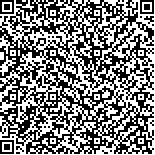Research Progress of Geostationary Satellite Based Convective Initiation
- Article
- Figures
- Metrics
- Preview PDF
- Reference
- Related
- Cited by
- Materials
Abstract:
A brief review of geostationary satellite based convective initiation (CI) including the cloud clusters (CC) identification, the CC tracking technique, the multi spectral cloud top properties of CI, the determination of likelihood for CI and some conclusions are presented. Studies indicate that CI may predict the rain storms more early than ground based radar by choosing carefully the sensitive channels, bands combinations and temporal trends, showing its application potentials for nowcasting forecasts. The knowing CI algorithms basically involve three parts: target identification, tracking technique and CI likelihood detection. The operational algorithms are similar approaches but something different. For example, the Rapidly Developing Thunderstorms algorithm (RDT) considers the vertical cross section of cloud systems while the tracking algorithm is mainly built on the overlapping between cells according to their move and speed. The Forecasting and Tracking the Evolution of Cloud Clusters (ForTraCC) technique concerns active convective systems, presenting the tracking situation including merges and splitting and displaing the ability to forecast the MCS trajectory. The GOES R CI algorithm aims for the next generation satellite’s sounding and observing, using a series of spectral and temporal thresholds to identify CI. While the University of Wisconsin Convective Initiation (UWCI) algorithm utilizes a box averaged approach to monitor cloud top cooling rates of CI. This approach is computationally inexpensive and easily provide to engineering. With some new payloads ongoing launch and more powerful detection abilities, more and more satellite data will be introduced to identify convective cells. Also, computer technique progress will help to solve the complicated problems which may appear in the process of convective tracking, these efforts will improve the accuracy of CI products.
Keywords:
Project Supported:
Clc Number:


Mobile website









